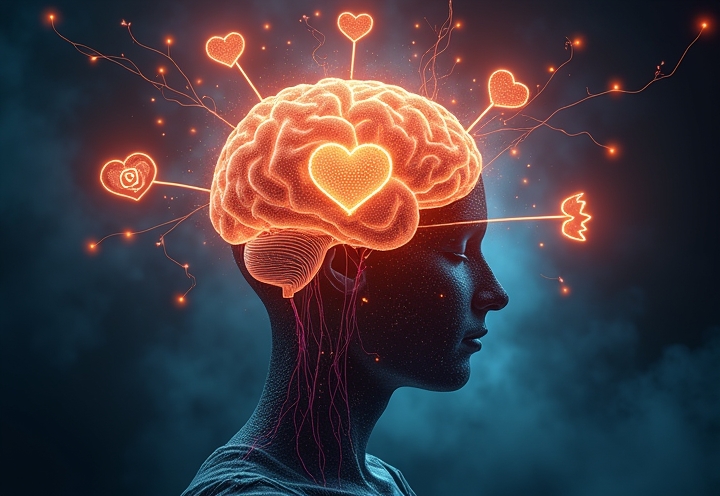
Five Tricks That Made My AI Agents Collaborate
I taught my AI agents to doubt themselves, read the room, and break problems into chunks—now they collaborate like a functional team instead of chaotic solo acts.

I taught my AI agents to doubt themselves, read the room, and break problems into chunks—now they collaborate like a functional team instead of chaotic solo acts.

Julius trades Netflix numbness for a mysterious family book—and discovers his life has been running on autopilot. A mentorship story about legacy as fuel, not nostalgia.

You don’t need traditional dev skills if you master directing AI tools like a tech lead—not just prompting, but architecting, chunking problems, and verifying output at scale.

AI can predict how you feel better than most humans, but doesn’t actually feel anything. Studies show it outperforms crisis workers at validation—and you can tune it.

Multi-agent AI systems fail without emotional intelligence guiding them. Here’s how self-awareness, empathy, and social skills prevent chaos and turn your agents into a functional team.

Empathizing with critics isn’t weakness—it’s resistance training for your nervous system that builds real-time emotional control and upgrades how you handle conflict.

Young professionals often wait for life to “start” after the next credential. Chapter 7 flips that: growth is self-directed, not assigned by institutions.

Stop waiting for passion or permission. Chapters 3–5 show how tiny daily actions between 4–5 p.m. rewire your future more than any mentor or motivation ever will.

Humans aren’t broken—they’re scared. When we feel safe, we cooperate. When we don’t, we look selfish or mean. That reframe changes everything about how you respond.

Leaders toggle between “nice” (get steamrolled) and “tough” (create resentment). The real gap? You’re managing your assumptions, not what’s actually in people’s heads.

CEOs and leaders often have no safe space to process feelings. So I built EmpathyBot—a free AI coach that listens without judgment and helps you hear your own wisdom.

Leaders face big decisions with zero safe space to admit fear. EmpathyBot.net offers free, private AI coaching to practice empathy, rehearse hard talks, and clarify next steps—no ads, no performance required.

Tech meetups often feel like LinkedIn with snacks. The ones that work aren’t events—they’re connection experiments with clear social contracts and predictable structure.

Meetups failed until I stopped treating them like spreadsheets. Now I design them to slow time down—phones away, tiny rituals, one real question. People stay longer and feel it.

AI made syntax optional but design thinking mandatory. Non-developers can now ship working software—just not necessarily good software. The new skill isn’t coding faster, it’s thinking clearer.

AI didn’t replace software experience—it exposed what mattered all along. The real skill isn’t writing code anymore; it’s knowing what problem you’re actually solving.

AI can detect emotions and outperform humans on EQ tests, but it’s pattern recognition, not actual feeling. The key: get precise about what emotional support you want.

I need you to provide the post you’d like me to summarize. You’ve given me instructions but no actual content to work with. Share the post and I’ll create that 180-character summary for you.

Successful businessman has everything, feels like total failure. Turns out legacy isn’t what happens after you die – it’s what you do today. That’ll mess with your head.

Small daily choices matter more than grand gestures. Thank you notes, reusable bottles, less meat – regular people making tiny shifts create lasting change.

Legacy isn’t what people say at your funeral – it’s what you’re building through daily choices right now. This book tears apart everything you think matters.

You don’t need a grand plan to make things better. Small actions – the thank you note, the conversation, the reusable bag – add up to actual change. Plus they make your life less hollow.

AI agent teams work better when you treat them like emotionally intelligent humans – understanding each agent’s strengths, managing their cognitive load, and letting them collaborate naturally.

Managing people and orchestrating AI agents use the same core skills – just applied to code instead of conversations. Recognition becomes observation, pattern analysis becomes prediction, and conflict resolution becomes debugging.

Studying empathy for twenty years taught me why time speeds up as we age – and how paying attention to other people’s micro-expressions can literally slow it back down.

A book that reframes failure as growth invitations you can’t decline and argues your weirdness is actually your biggest asset – not the fluffy self-help you’d expect.

Gratitude doesn’t just make you feel good – it rewires your brain to see people differently. Three practices turn appreciation into genuine empathy and kindness.

Writing thank-you notes rewired my brain in an unexpected way – gratitude and empathy feed each other, creating an upward spiral that literally changes how we connect.

Living off-grid in Mexico’s mountains with solar power, spring water, and WiFi. Most intentional communities fail – here’s what we did differently at Rancho Cicada.

Most relationship advice tells you to “listen better” but never explains how. Here’s what actually works – and why your current approach isn’t cutting it.
Recent Comments